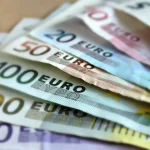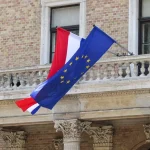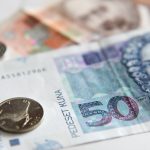As Poslovni Dnevnik/Ana Blaskovic writes, if anything in the economic field will mark 2022, it will be all of the hurried final preparations for the introduction of the euro and Croatian Eurozone entry in 2023. The green light for a step towards stronger integration into the European Union (EU) should, apparently, be given in the summer of this year when the exact date of the final transition will be revealed.
Replacing the national currency with the European single one is a massive logistical undertaking for which preparations are underway with the assumption that we will be paying for items in euros from the first day of 2023. Credit and other financial institutions have been in talks with regulators for some time about how to change their IT systems and adjust all of their business processes, a cost that, in the case of banks alone, is estimated to stand between 80m and 100m kuna.
According to the experience of other countries that joined the euro in the past, the central bank expects that when exchanging the kuna for the euro, about 36 percent of the amount of coins in circulation will be returned, ie 1.1 billion pieces of kuna coins and 99 percent of the amount of banknotes, ie more than 500 million pieces of kuna banknotes. Banknotes will be able to be exchanged for euros on a permanent basis, but the deadline for coins will be limited to three years from the introduction of the euro as Croatia’s official currency.
The experiences of other European Union countries which are in the Eurozone are diverse. Twenty years after the euro emerged as the single currency, it is estimated that there are still around 8.5 billion euros left in the former national currencies, either under people’s mattresses, in old jackets or as souvenirs from the past. The largest amount falls on the unreplaced German marks in which the (recalculated) amount stands at a whopping 6.3 billion euros.
It is followed by the Austrian schilling, which accounts for another 505 million euros, and the Belgian franc, accounting for 428 million euros. In neighbouring Slovenia, for example, the former Slovenian tolars account for 80 million euros, according to Bloomberg.
Part of the reason for nostalgia or forgetfulness probably lies in the fact that some countries have left an unlimited deadline to exchange their currencies, like Germany, at least when it comes to banknotes. Spain, France and Austria, on the other hand, have long since closed the door to such a possibility, leaving any pesetas or francs to become collector’s items for those nostalgic about pre-euro Europe.
Croatia already has experience in exchanging currencies. When the kuna was introduced after the stabilisation programme on May the 30th, 1994, it replaced the Croatian dinar as a temporary currency issued by the Ministry of Finance with the signature of the Minister. The CNB exchanged dinars on a regular basis until the end of 1994 and subsequently until the end of June 1995. With this being a memory, it’s hoped that Croatian Eurozone entry will also be that bit smoother for a country that has been very much in transition in many respects since the end of the Homeland War.
“Since the replacement of Croatian dinars hasn’t been possible since mid-1995, Croatian dinar banknotes have exclusively numismatic value,” the central bank said. According to their data, 37 percent of the total printed 513.6 million dinar banknotes remained unchanged, so it will be interesting to see how much kuna will remain nostalgically in pockets, down the sides of sofas, under beds and in varying collections of old and foreign money that many people keep.
“Given the fact that after three years, kuna coins will no longer be able to be exchanged for euros and will no longer play a role as a means of payment, they will be able to be adequately disposed of without any risk of reappearing on the exchange. Therefore, cooperation has been initiated with the Ministry of Defense in finding adequate, supervised and protected space that the Croatian National Bank will lease for the storage of withdrawn kuna coins,” the CNB said, adding that they expect a lease agreement with the Defense Ministry in regard to that.
In parallel with their withdrawal from circulation, kuna banknotes will be successively destroyed with banknote processing systems that have the ability to totally destroy them. Four months before the introduction of the euro, banks will be supplied with banknotes, and a month later with euro coins. When the countdown begins in the last 30 days, the euro will be ready in the offices of Fina and Croatian Post (Hrvatska posta), and the indirect pre-supply of companies and shops will begin.
On the very day of the introduction of the euro, ie Croatian Eurozone entry, the “big bang” approach will be applied to savings and loans. This means that all kuna savings and deposits on current, savings and other accounts, as well as all loans will become euro loans at a fixed exchange rate free of charge. The key assumption is that any change in interest rates (in the case of variable interest rates) must not be to the detriment of the client, while fixed interest rates will remain the same.
The first two weeks after Croatian Eurozone entry will be a period of double circulation in which cash can be exchanged free of charge at banks, Fina and post offices, and then only at banks for which they will be entitled to charge a fee. A year later, the Croatian kuna will be able to be exchanged for euros only at the Croatian National Bank, free of charge.
Since one of the biggest fears that accompanies the whole saga surrounding the euro is the fear of rising prices, which is no longer insignificant in the face of accelerating inflation, it will be crucial to dual disclose the prices that will last at least one year starting in August. An information campaign will follow in which people will be encouraged to deposit as many kuna coins and banknotes as possible to banks in order to easily convert them to euros at a fixed exchange rate and free of charge on the day of the introduction of the euro.
For more on Croatian Eurozone entry, follow our politics section.












